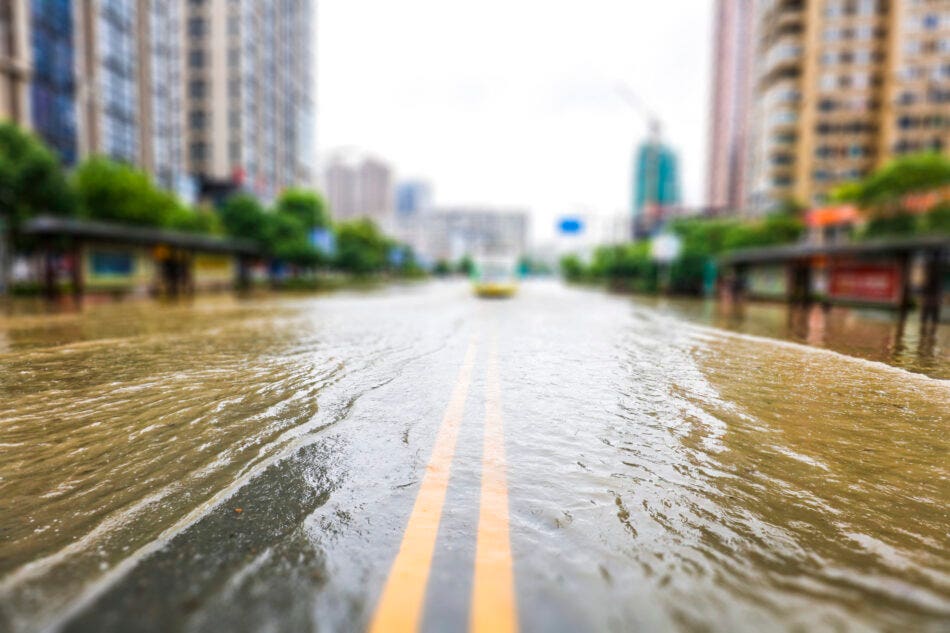Flooding is the most common natural hazard in our province, yet it often takes Albertans by surprise each spring.
Now is the time for businesses to start preparing for flood season by:
- protecting your property;
- creating a business continuity plan; and,
- understanding your insurance coverages.
By taking these measures, you can reduce the risk the of water damage caused by flooding; keep your business operational in the case of a flood; and protect your business from significant financial damages.
Protect your property
Protecting your property from water is your first line of defence against flooding—especially if you’re located near a body of water such as a river or lake.
All Alberta businesses can benefit from taking necessary precautions to protect their property from different types of water damage, including pooling and seepage caused by torrential rains and rapid snow melt.
Complete routine maintenance
Start by reviewing your lease to understand the types of maintenance your business is responsible for. You might be responsible for all of it; if not, you should still routinely examine your property and request fixes, as necessary.
Here are some maintenance tips to protect your business property from flood damage:
- Seal off your building by filling cracks and framing joints with waterproof sealant.
- Ensure all windows and doors are properly sealed.
- Make sure there is no water staining or mould around windows and doors, at major walls joints and where walls meet the ground.
- Ensure any external fixtures are properly waterproofed. This could include satellites, solar panels and any electrical wiring.
- Keep snow piles away from your window and doors, and make sure any drainage systems extend at least two metres from your property.
Store valuables above flood levels
Every business—from dry cleaners to law firms, transportation to retail, and everything in between—relies on material goods to carry out day-to-day operations.
Your business has likely taken measures to reduce risks such as theft. But are you also proactively protecting your valuables from flooding?
Now is the time to assess where and how your company stores equipment and inventory. Start with your most valuable goods (those critical to keeping your business operational) and identify storage solutions that are above flood levels.
This could include:
- Keeping items such as inventory, electronics and merchandise up on shelves.
- Storing important documents and files in water-proof containers.
- Placing large appliances and machinery on raised blocks. If this is not possible, consider using floodwalls or other barriers to protect equipment that is stored on the floor.
- Keeping hazardous materials (e.g., paint, oil, cleaning supplies) out of the basement and off the floor at ground level. In the event of a flood, these materials could leak and cause an environmental hazard.
As a rule, store your most valuable goods out of the basement and off the floor, whenever possible.
Stock up on flood provisions
You might want to invest in flood provisions, especially if your business is in a floodplain. This could include:
- barriers (there are many options available, from sandbags to dams that can be filled with water);
- portable pumps to remove flood water; and,
- alternate power sources, such as a generator.
Before making any purchases, check to see if your local government is providing businesses and residents with any flood provisions. For example, the Regional Municipality of Wood Buffalo is running a sandbag program until April 1, 2021.
Also, make sure to follow directions to properly fill and place sandbags for the most effective temporary flood protection.
Create a business continuity plan
A business continuity plan can help you keep your business operational when a disaster strikes—for example, if your property is flooded or forced to temporarily close due to evacuation orders.
Double check your insurance coverages
It is becoming increasingly challenging for businesses in some regions to obtain flood and overland water coverage. This is due to the catastrophic flooding events that have occurred in Alberta within the past decade.
Still, it is a good idea to contact your broker to confirm what your current policy covers and to ask about additional insurances that might be available to you.

